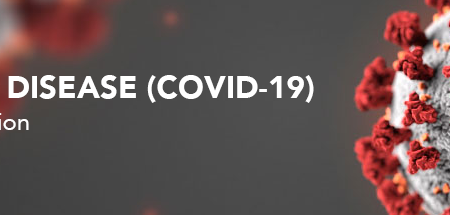Newborn Hearing Screening Requirement
A newborn hearing screening must be completed at the birthing facility. Automated auditory brainstem response (AABR) or transient evoke or distortion product otoacoustic emissions (OAE) may be performed.
If an infant is not born in a birthing facility and is not admitted to a birthing facility, the infant must be referred to a facility that provides newborn hearing screening.
Newborns who do not pass the initial screen must be rescreened a second time in the birthing facility before discharge.
Screening Results
Birthing facilities must report all newborn hearing screening results to DSHS within using the web based Texas Early Hearing Detection and Intervention (TEHDI) Management Information System (MIS). Birthing facilities must provide written newborn hearing screening results to the parent or caregiver as well as the newborn’s primary care provider (PCP) or medical home.
PCPs or medical homes (Texas Health Steps providers) must obtain a copy of the newborn hearing screening results within the TEHDI MIS if not provided by the birthing facility. The PCP or medical home must review all newborn hearing screening results with the parent or caregiver at the first checkup and determine if any additional follow-up is necessary.
Note: The PCP or medical home is responsible for managing and coordinating care for the child. Refer to the American Academy of Pediatrics Position Statement at http://pediatrics.aappublications.org/content/129/5/996.
Newborns who pass the newborn hearing screening must have their hearing monitored per the Texas Health Steps (THSteps) periodicity schedule. The PCP or medical home may opt to use the following tools to monitor developmental milestone benchmarks in newborns that pass their newborn hearing screening:
- TEHDI: A Roadmap for Families (English)
- Hearing Checklist for Parents (English)
- Hearing Checklist for Parents (Spanish)
Outpatient Rescreening
Newborns who do not pass the second screen in the birthing facility must be referred to a Medicaid-enrolled provider for an outpatient follow-up rescreen. The rescreen provider must have access to AABR or OAE screening and must be experienced with the pediatric population under three years of age.
Newborns who do not receive a referral from the birthing facility, after not passing the second screen in the birthing facility, must be referred by their PCP or medical home to a Medicaid-enrolled provider for an outpatient follow-up rescreen, unless their PCP or medical home is adequately equipped to provide the service. The optimal timeframe for the outpatient follow-up rescreen is when the infant is between 10 and 30 days of age.
Outpatient follow-up rescreens must be completed by AABR or OAE screening. Results must be reported as soon as possible to the DSHS TEHDI MIS, as well as the infant’s PCP or medical home.
Newborns who pass the outpatient rescreen must have their hearing monitored by their PCP or medical home per the THSteps periodicity schedule.
Diagnostic Audiological Evaluation
Newborns who do not pass the outpatient rescreen must be referred to a Medicaid-enrolled audiologist for a diagnostic audiological evaluation using the Texas Pediatric Protocol for Evaluation. Referrals should be made upon consultation with the PCP or medical home.
Note: Additional information about the Texas Pediatric Protocol for Evaluation is available at http://www.dshs.texas.gov/tehdi/Audiologic-Evaluation-Protocol.aspx.
Unless the newborn or infant has been hospitalized since birth, the diagnostic audiological evaluation must be completed no later than the third month after birth, or upon referral by the PCP or medical home.
Diagnostic audiological evaluations completed by audiologists using the Texas Pediatric Protocol for Evaluation must include a diagnostic auditory brainstem response (ABR) and, if not previously done, a diagnostic OAE to determine cochlear involvement.
Audiologists will use equipment norms for newborns, preferably ones that they have collected on their equipment.
Protocols include air and bone conduction testing using tone burst ABR, as well as click ABR, so the amplification may be appropriate to fit the individual.
Note: Additional information about technologies that have been evaluated by an independent investigator and DSHS, and have been found to meet the requirements for conducting newborn hearing screening is available at http://www.dshs.texas.gov/tehdi/approved-screening-equipment.aspx.
Evaluation Results
Audiologists must report all diagnostic results to DSHS TEHDI MIS, and provide written hearing screening results to the PCP or medical home.
The newborn or infant will be fitted for hearing aids by the audiologist when appropriate, and should receive continued audiological assessments and monitoring as needed.
ECI Referrals
Newborns or infants not passing the outpatient rescreen must also be referred by the PCP or medical home to ECI for provision of services. The referral should be made within the TEHDI MIS.
Newborns or infants, as required by federal law under the Individuals with Disabilities in Education Act (IDEA), may be referred to ECI twice under the following circumstances:
- Upon suspicion that the child is deaf or hard of hearing, for service coordination and possible confirmation of eligibility for ECI services
- Upon confirmation that the child is deaf or hard of hearing, for a referral to other Local Education Agency (LEA) for auditory impairment (AI) services
Late Onset Hearing Loss
When one or more risk factors for late onset hearing loss has been identified and the newborn or infant passed their hearing screen, the outcome will not be “normal hearing” but will be “in process.” Noting the infant as “in process” allows all health-care providers in the care of the infant to be aware of the presence of risk factors to determine the frequency of risk monitoring to identify audiological issues as soon as possible. This determination depends on the type and number of the following risks identified:
- Craniofacial anomalies
- Exchange transfusion for elevated bilirubin
- Family history of deafness
- NICU > 5 days
- Apgar 0-4 at 1 minute
- Apgar 0-6 at 5 minutes
- Bacterial meningitis
- Birth weight < 1500g
- Congenital infection
- Head injury
- Neurodegenerative disorder
- Other postnatal infection
- Otitis media > 3 months (middle ear infection)
- Ototoxic medications administered
- Parental concern regarding hearing status
- Persistent pulmonary hypertension of the newborn associated with mechanical ventilation
- Syndrome
Note: Risk factors for late onset hearing loss and risk monitoring periodicity schedule is available at http://infanthearing.org/ehdi-ebook/2017_ebook/3%20Chapter3Tracking2017.pdf.





Leave a Reply
You must be logged in to post a comment.